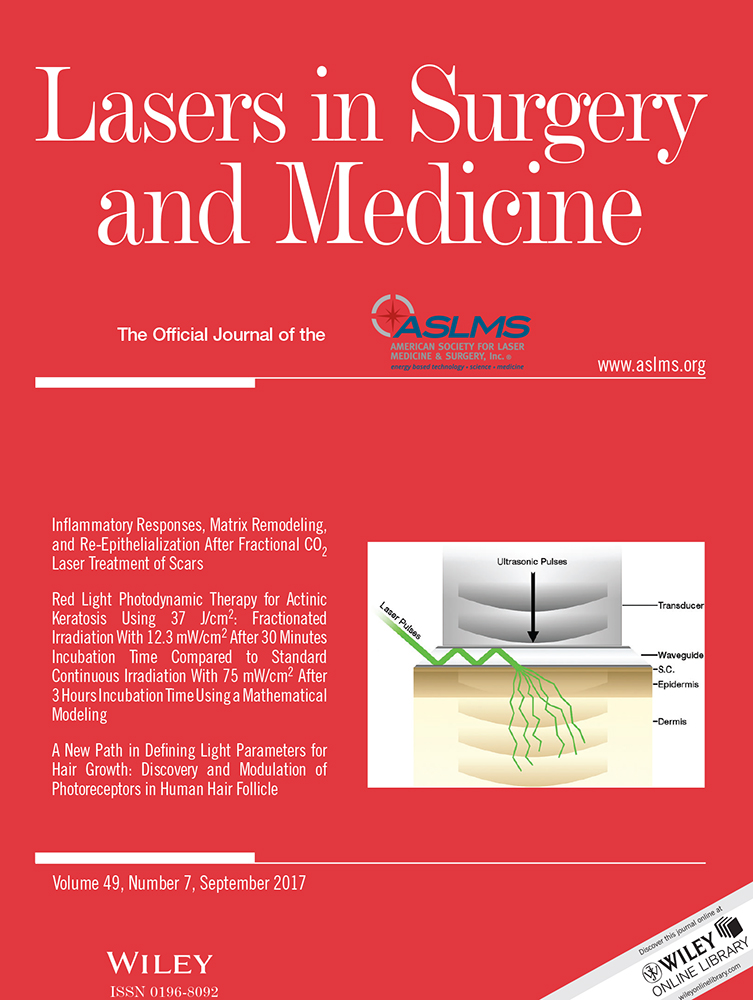Inflammatory responses, matrix remodeling, and re-epithelialization after fractional CO2 laser treatment of scars
Abstract
Background and Objective
Fractional CO2 laser therapy has been used to improve scar pliability and appearance; however, a variety of treatment protocols have been utilized with varied outcomes. Understanding the relationship between laser power and extent of initial tissue ablation and time frame for remodeling could help determine an optimum power and frequency for laser treatment. The characteristics of initial injury caused by fractional CO2 laser treatment, the rates of dermal remodeling and re-epithelialization, and the extent of inflammation as a function of laser stacking were assessed in this study in a porcine scar model.
Materials and Methods
Full-thickness burn wounds were created on female Red Duroc pigs followed by immediate excision of the eschar and split-thickness autografting. Three months after injury, the resultant scars were treated with a fractional CO2 laser with 70 mJ of energy delivered as either a single pulse or stacked for three consecutive pulses. Immediately prior to laser treatment and at 1, 24, 96, and 168 hours post-laser treatment, transepidermal water loss (TEWL), erythema, and microscopic characteristics of laser injury were measured. In addition, markers for inflammatory cytokines, extracellular matrix proteins, and re-epithelialization were quantified at all time points using qRT-PCR.
Results
Both treatments produced erythema in the scar that peaked 24 hours after treatment then decreased to basal levels by 168 hours. TEWL increased after laser treatment and returned to normal levels between 24 and 96 hours later. Stacking of the pulses did not significantly increase the depth of ablated wells or extend the presence of erythema. Interleukin 6 and monocyte chemoattractant protein-1 were found to increase significantly 1 hour after treatment but returned to baseline by 24 hours post laser. In contrast, expression of transforming growth factor β1 and transforming growth factor β3 increased slowly after treatment with a more modest increase than interleukin 6 and monocyte chemoattractant protein-1.
Conclusions
In the current study, the properties of the ablative zones were not directly proportional to the total amount of energy applied to the porcine scars with the use of triple stacking, resulting in only minor increases to microthermal zone (MTZ) depth and width versus a single pulse. Re-epithelialization and re-establishment of epidermal barrier function were observed in laser treated scars by 48 hours post therapy. Finally, many of the inflammatory genes up-regulated by the laser ablation returned to baseline within 1 week. As a whole, these results suggest that microthermal zones created by FXCO2 treatment re-epithelialize rapidly with the inflammatory response to the laser induced injury largely resolved within 1 week post treatment. Further study is needed to understand the relationship between laser stacking and MTZ properties in human scars in order to evaluate the clinical applicability of the stacking technique. Lasers Surg. Med. 49:675–685, 2017. © 2017 Wiley Periodicals, Inc.




